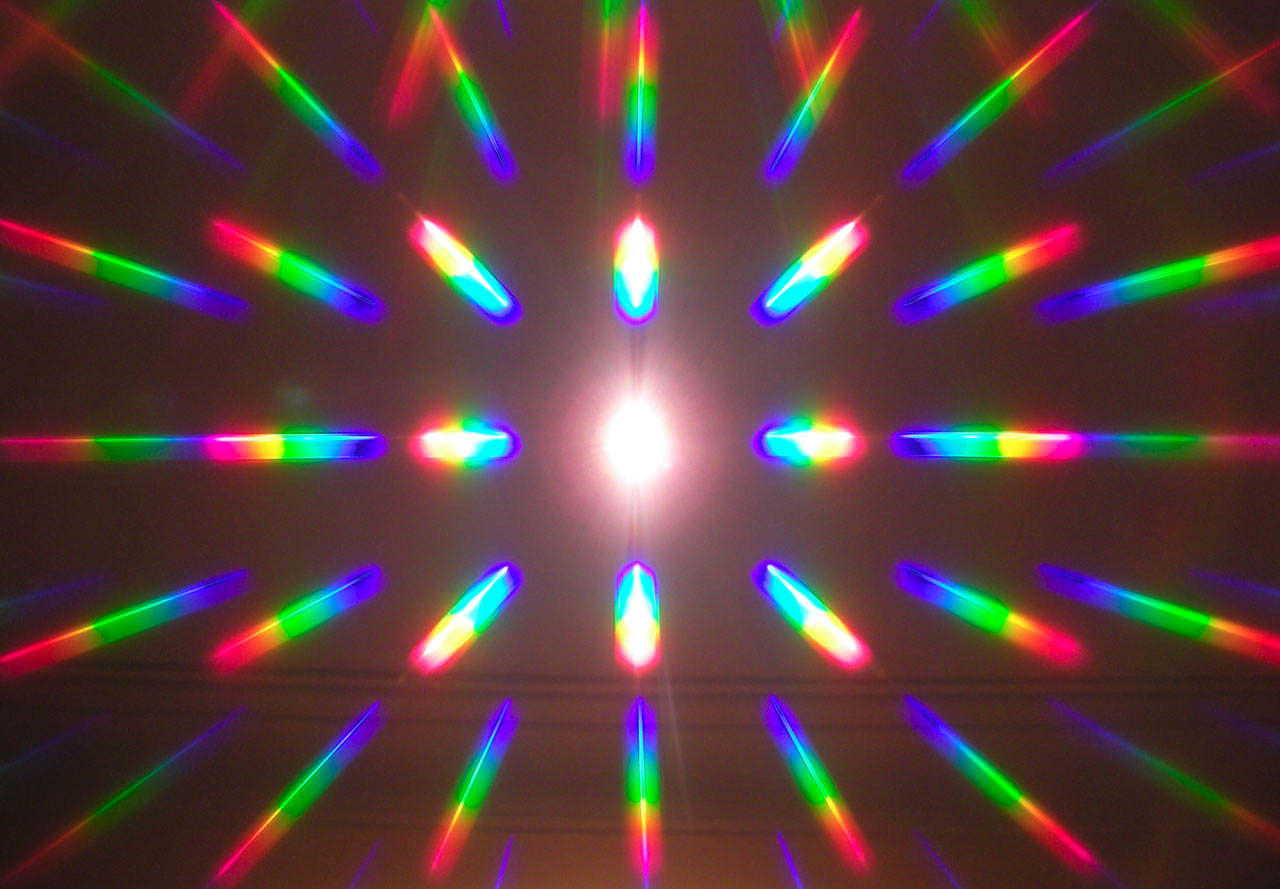
Interference is responsible for the often-brilliant iridescent coloring displayed by hummingbirds, a variety of beetles and other insects whose wings cast a metallic luster, and several species of magnificent butterflies. Like the soap bubble, the color is derived from interference between reflected light waves bouncing from neighboring tracks on the disk.

The very close spacing of these tracks mimics the ultra-fine lines present on a diffraction grating to produce a spectacular rainbow-like effect of color when ordinary white light is reflected from the surface.
#Examples of diffraction of light series#
The closely spaced spiral tracks on a compact or digital videodisk contain a series of pits and lands that are utilized to encode the digital profile of the audio and/or video sequences contained on the disk. Music, movie, and computer enthusiasts are also exposed to the interference phenomenon each time they load a compact disk into the audio player or a CD-ROM drive. Figure 2 - Reflected Light Pathways Through Soap Bubbles In areas where the waves are out of step with each other, even by some fractional portion of a wavelength, destructive interference effects will begin to occur, attenuating or canceling the reflected light (and the color). If the extra distance traveled by the light waves reflected from the inner surface is exactly equal to the wavelength of those bouncing away from the outer surface, then the light waves will recombine constructively to form bright colors. Simply turning the soap bubble, or moving it closer or farther away, causes the colors to change, or even disappear altogether. The result is a dazzling display of color that seems to gyrate along the surface of the bubble as it expands and contracts with wind currents. When the waves reflected from the inner and outer surfaces of the soap film recombine, they will interfere with each other to either remove or reinforce some wavelengths of white light by destructive or constructive interference (as illustrated in Figure 2).

The interference effect is observed because light reflected from the inner surface of the bubble must travel farther than light reflected from the outer surface, and variations in the soap film thickness produce corresponding differences in the distances light waves must travel to reach our eyes. The two surfaces are very close together (separated by only a few micrometers) and light reflected from the inner surface interferes both constructively and destructively with light reflected from the outer surface. The dynamic interplay of colors in a soap bubble derives from simultaneous reflection of light from both the inside and outside surfaces of the exceedingly thin soap film. Another example is the thin film of a soap bubble (illustrated in Figure 1), which reflects a spectrum of beautiful colors when illuminated by natural or artificial light sources.

One of the best examples of interference is demonstrated by the light reflected from a film of oil floating on water. Most of us observe some type of optical interference almost every day, but usually do not realize the events in play behind the often-kaleidoscopic display of color produced when light waves interfere with each other. The seemingly close relationship between diffraction and interference occurs because they are actually manifestations of the same physical process and produce ostensibly reciprocal effects.


 0 kommentar(er)
0 kommentar(er)
